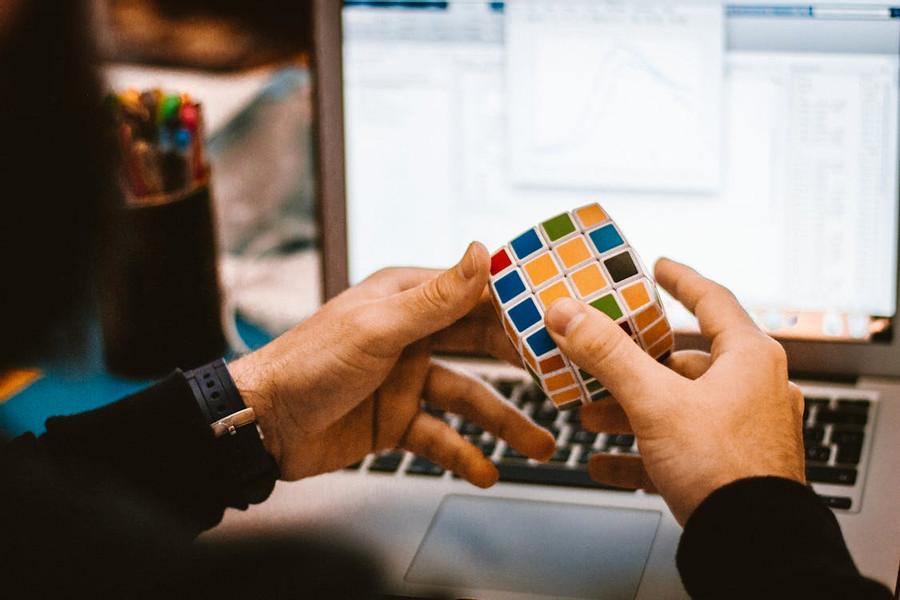The 4 Steps to Becoming Indistractable
Curated from: nirandfar.com
Ideas, facts & insights covering these topics:
11 ideas
·2.18K reads
14
Explore the World's Best Ideas
Join today and uncover 100+ curated journeys from 50+ topics. Unlock access to our mobile app with extensive features.
Habits and Distractions
Every building needs a sturdy foundation. Your daily habits are a foundation on which you are building who you are—your values, goals, personality, etc.
If you track your daily habits, you may be surprised to find a collection of suboptimal habits: you may not be reaching your full potential.
One of those suboptimal habits is being easily distracted.
Distraction erodes your day-to-day life and diverts your resources toward things that don’t really matter. If you’re not equipped to manage distraction—if you’re not indistractable—your brain will be manipulated by time-wasting diversions.
38
282 reads
The Four Pillars to Becoming Indistractable
- Mastering internal triggers
- Making time for traction
- Hacking back external triggers
- Blocking out distraction
Remember: Distractions are things that push us away from what we want most in life.
40
332 reads
Internal And External Triggers
All behaviours, both traction and distraction, are prompted by triggers, both internal and external.
Internal triggers cue us from within. When we feel our belly growl, we look for a snack. When we’re cold, we find a coat to warm up. And when we’re sad, lonely, or stressed, we might call a friend or loved one for support.
External triggers are cues in our environment such as the pings, dings, and rings that prompt us to check our email, answer a phone call, or open a news alert. External triggers can also take the form of other people, such as a coworker who stops by our desk to chat.
36
199 reads
Mastering Internal Triggers
Distraction, it turns out, isn’t about the distracting thing itself; rather, it’s about how we respond to it.
Resisting, ruminating, and finally giving in to the desire perpetuates the cycle of distraction and quite possibly drives many unwanted behaviours.
While we can’t control the feelings and thoughts that pop into our heads, we can control what we do with them. We can manage distractions that originate from within by changing how we think about them.
40
217 reads
Handling The Distraction
Step 1: Look for the discomfort that precedes the distraction, focusing on the internal trigger.
Step 2: Write down the trigger.
Step 3: Explore your negative sensations with curiosity instead of contempt.
Step 4: Be extra cautious during liminal moments when you transition from one activity to another.
40
229 reads
Adjusting Our Vision
We can change the way we see ourselves to get rid of self-limiting beliefs. If we believe we’re short on willpower and self-control, then we will be. If we decide we’re powerless to resist temptation, it becomes true. If we tell ourselves we are deficient by nature, we will believe every word.
36
175 reads
Making Time For Traction
Being indistractable is largely about making sure you make time for traction each day and eliminating the distraction that keeps you from living the life you want—one that involves taking care of yourself, your relationships, and your work.
Planning your time with intention is critical, even if you choose to spend it scrolling through celebrity headlines or reading a steamy romance novel. After all, the time you’ve planned to waste is not wasted time.
41
172 reads
Hacking Back External Triggers
Unwanted external triggers hamper our productivity and diminish our well-being. While technology companies use cues like the pings and dings on our phones to hack our behaviour, external triggers are not confined to our digital devices. They’re all around us—from cookies beckoning when we open the kitchen cabinet to a chatty coworker keeping us from finishing a time-sensitive project.
36
143 reads
The Top Contenders
- Work interruptions
- Group chat
- Meetings
- Smartphone
- Computer desktop
- Online articles
- Online feeds
These interruptions lead to mistakes and steal your time from what you should be focused on. It’s time to block out those distractions.
37
168 reads
Blocking Out Distraction
The last step to becoming indistractable involves preventing ourselves from sliding into distraction.
To do so, we must learn a powerful technique called “precommitment,” which involves removing a choice in the future to overcome our impulses in the present.
Precommitments are the last line of defence preventing us from sliding into distraction. You should only use this after the other three indistractable strategies have been applied.
36
136 reads
The Pacts
You can prevent distractions with effort pacts, which makes unwanted behaviour more difficult to do.
You can also make a price pact, which involves putting money on the line to encourage you to do what you say you will.
Finally, an identity pact is one of the most effective ways of changing your behaviour since it involves changing your identity—your image of who you are.
36
133 reads
IDEAS CURATED BY
A good night sleep and a helathy morning routine is what I work on constantly.
CURATOR'S NOTE
We live in a distracted world. Don't Look Up!
“
Katherine L.'s ideas are part of this journey:
Learn more about productivity with this collection
How to close the deal
How to handle objections
How to present your value to your employer
Related collections
Similar ideas
4 ideas
4 ideas
4 ideas
Read & Learn
20x Faster
without
deepstash
with
deepstash
with
deepstash
Personalized microlearning
—
100+ Learning Journeys
—
Access to 200,000+ ideas
—
Access to the mobile app
—
Unlimited idea saving
—
—
Unlimited history
—
—
Unlimited listening to ideas
—
—
Downloading & offline access
—
—
Supercharge your mind with one idea per day
Enter your email and spend 1 minute every day to learn something new.
I agree to receive email updates











